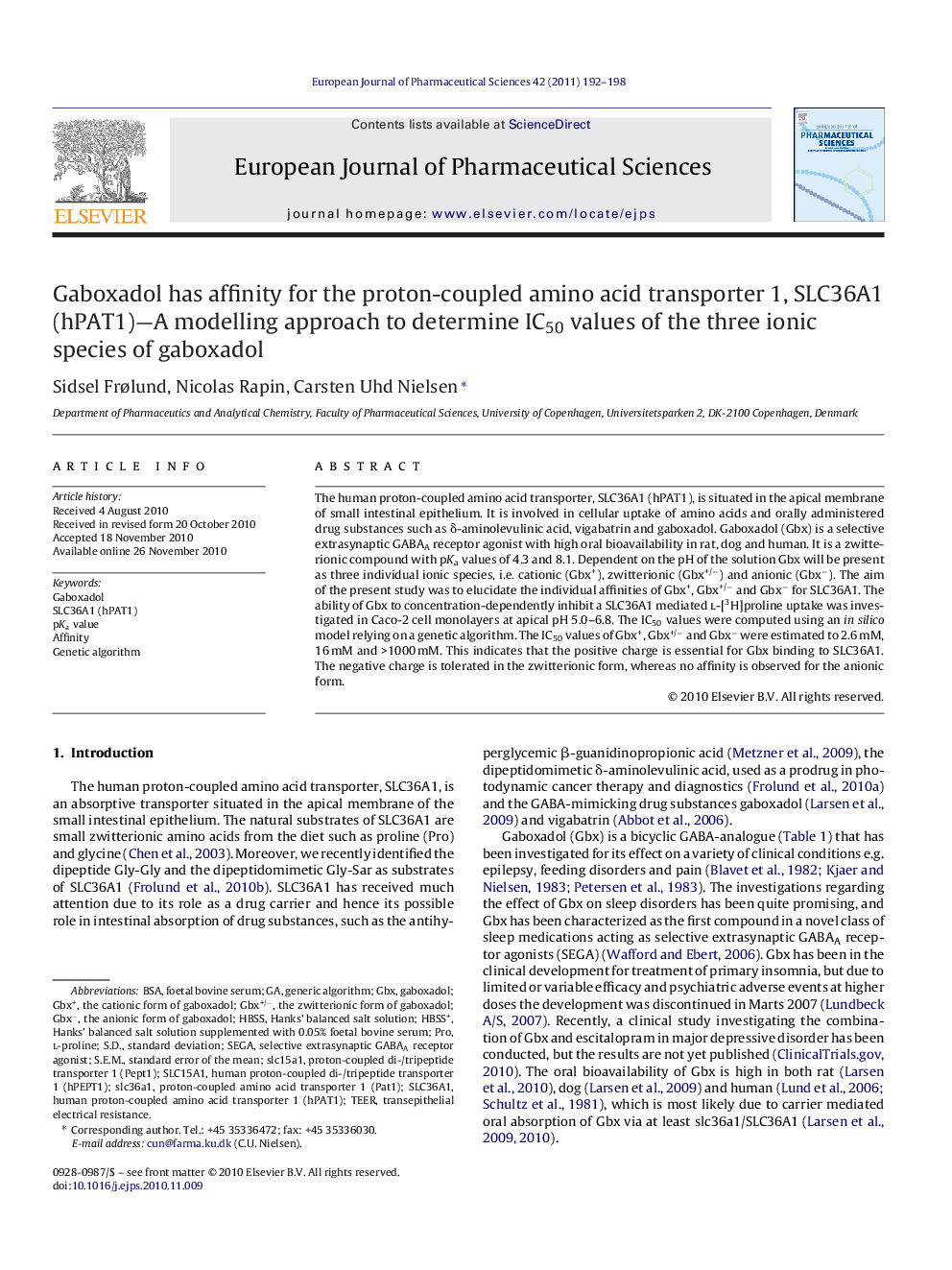| Article ID | Journal | Published Year | Pages | File Type |
|---|---|---|---|---|
| 5810245 | European Journal of Pharmaceutical Sciences | 2011 | 7 Pages |
The human proton-coupled amino acid transporter, SLC36A1 (hPAT1), is situated in the apical membrane of small intestinal epithelium. It is involved in cellular uptake of amino acids and orally administered drug substances such as δ-aminolevulinic acid, vigabatrin and gaboxadol. Gaboxadol (Gbx) is a selective extrasynaptic GABAA receptor agonist with high oral bioavailability in rat, dog and human. It is a zwitterionic compound with pKa values of 4.3 and 8.1. Dependent on the pH of the solution Gbx will be present as three individual ionic species, i.e. cationic (Gbx+), zwitterionic (Gbx+/â) and anionic (Gbxâ). The aim of the present study was to elucidate the individual affinities of Gbx+, Gbx+/â and Gbxâ for SLC36A1. The ability of Gbx to concentration-dependently inhibit a SLC36A1 mediated l-[3H]proline uptake was investigated in Caco-2 cell monolayers at apical pH 5.0-6.8. The IC50 values were computed using an in silico model relying on a genetic algorithm. The IC50 values of Gbx+, Gbx+/â and Gbxâ were estimated to 2.6 mM, 16 mM and >1000 mM. This indicates that the positive charge is essential for Gbx binding to SLC36A1. The negative charge is tolerated in the zwitterionic form, whereas no affinity is observed for the anionic form.
Graphical abstractThe cationic form of gaboxadol has a sixfold higher affinity for SLC36A1 than the zwitterionic form. The anionic form does not bind to SLC36A1.Download high-res image (138KB)Download full-size image
